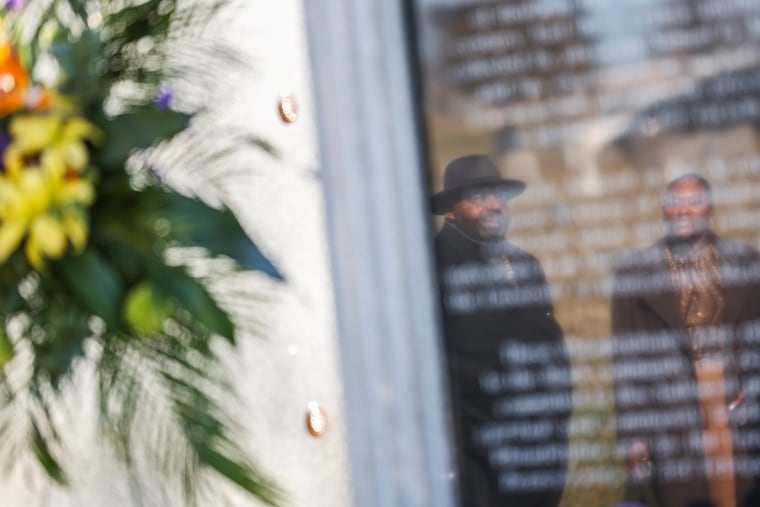A burial for 19 Black Philadelphians, 200 years in the making
They now rest in peace and with dignity at Eden Cemetery, rather than in the storerooms of the Penn Museum.

Earlier this month, the Penn Museum interred the skulls of 19 Black Philadelphians at Eden Cemetery, a historic African American cemetery on the outskirts of Philadelphia. As part of ongoing efforts to center ethical stewardship of our collections, laying these individuals to rest represents a reckoning with our museum’s colonial past and an act of reconciliation with our local community.
At the time of their deaths, some 200 years ago, these individuals’ crania were unethically collected by physician Samuel G. Morton as part of the infamous Morton Cranial Collection, the largest collection of human skulls in its day. Morton was attempting to demonstrate the superiority of Europeans and provide a scientific basis for racism.
The names of these Philadelphians are unknown — Morton did not record them. Originally housed in the Academy of Natural Sciences of Philadelphia, the Morton Collection was relocated to the Penn Museum in 1966.
When I arrived at Penn in 2021, the museum was embroiled in controversies involving its holding of human remains of African Americans. We were one of many museums confronting legacies of colonial collecting practices, which included the acquisition of remains of enslaved and Indigenous people. To address the future of the remains of the Black Philadelphians in the Morton Collection, some of whom were likely born enslaved, I convened a committee of 14 West Philadelphia community and religious leaders in June 2021 to help find a path forward.
Our community partners insisted that these individuals did not belong in museum storerooms. After nearly 200 years of exhibition and scientific study, they should be laid to rest without delay; doing so would prioritize their human dignity and restore their personhood. Together we built a plan to lay these Philadelphians to rest at Eden Cemetery and to commemorate them with an interfaith ceremony.
Critics have argued that these Philadelphians should remain in storerooms until research leads to identification and claim by a descendant or members of a tribal community. There is, however, no guarantee that 19th-century archives will allow conclusive identification of individuals and descendants. While research over the last several years has shed some light on the circumstances of some of these individuals, these efforts have not yielded a single new name that can be definitively used for identification.
Nor has this research resulted in a claim from a descendant or a federally recognized tribe, as required by the federal Native American Graves Protection and Repatriation Act for individuals with possible Native American ancestry. Continuing this research without laying these Philadelphians to rest would prioritize the search for lineal descendants over their immediate human dignity.
Museums too often delay or avoid repatriations by claiming that more extensive research and conclusive evidence are warranted before taking action. Indeed, the new Native American Graves Protection and Repatriation Act regulations — the only legal framework available to guide repatriations — are aimed at undercutting such dilatory tactics. They require museums to rely on “the information available,” stressing that “cultural affiliation does not require exhaustive studies, additional research, or continuity through time.”
It’s my hope that continued research will successfully restore the identity of at least some of the Black Philadelphians in the Morton Collection. Importantly, our plan included interment in an aboveground mausoleum, so that if future research leads to an identification and a claim, the remains can be retrieved and entrusted to descendants. But given the nature of the 19th-century records available, it is unlikely that most of them will be identified with certainty.
To wait without a foreseeable end for research that may never be conclusive would be tantamount to doing nothing at all — which is ethically unacceptable for our museum.
It will be a happy day if these obstacles are surmounted, and we can return at least some of these Philadelphians to their descendants. For now, while research continues, let them rest in peace and with dignity at Eden Cemetery, rather than in the storerooms of the Penn Museum.
Christopher Woods is the Avalon Professor in the Humanities at the University of Pennsylvania and the Williams Director of the Penn Museum. Previously he was the John A. Wilson Professor and director of the Institute for the Study of Ancient Cultures (formerly the Oriental Institute) at the University of Chicago.